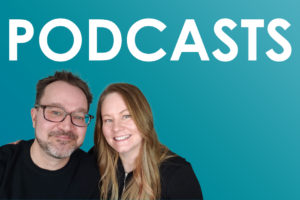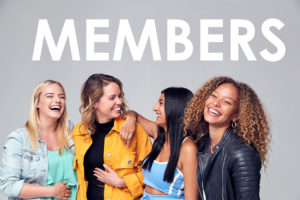
Personal branding has been a hot topic lately, and the questions I’ve included in this program must be explored before launching any inbound or outbound marketing plan. I hope you find it helpful towards growing your business.
This is my absolute favourite program of all my teachings, because this is where you will align your passion with what your marketing wants. Without getting this stuff sorted out and clear, none of the other stuff will work to it’s fullest.
Schedule some time to really dive into these workbooks. Reflect. Re-discover your passion and purpose in new ways. Have fun with it too!
Instructions:
- Watch the videos for extra tips and guidance.
- Work through each piece of curriculum to clarify your program ideas.
- Click on each file and then download the applicable PDFs and files to your device.
- Print the workbooks, if desired, and complete each section.
DOWNLOADS:
- Breakthrough Branding Workbook
- Slide Share Breakthrough Branding PowerPoint
- Notes, Links and Study of manifestos from my live workshop
- Some of my Manifestos
Copyright: These documents are for individual learning only. You do not have permission to edit, duplicate, resell or redistribute them in any way, shape, or form. Copyright © Jennifer Henczel, Vancouver, BC Canada.
Questions to Ask Yourself as You Embark on Your Personal Branding Journey
Engagement goes hand-in-hand with branding. The who, what, where, and how of product and content development also apply to creating your brand. Who you connect with, what you do to connect with people, where you connect with people, and how you connect with people is your brand in action. It’s what people see and how they will determine who you are to them, thus creating your brand.
Your brand is not necessarily what you think you are, it’s what is in the minds
of the people you are reaching. The ultimate goal is to align those 2 perceptions as closely as possible.
People want to do business with people. So, while we may come up with logos, brand names, and slogans along the way, keep in mind that people want to know YOU. They want to know who you are, what you offer, and what you are all about. So dig deep to explore your highest and truest self and demonstrate that in everything you do.
Don’t be vanilla! First, before you even begin, be sure that you are committed to showing people that you are the best at one thing. Do not set out on this journey with a plan to list every single thing you have ever done and can do. Build your story around the one thing that makes you stand out in the crowd. Some people think they are going to miss out on opportunities if they reduce the number of things they offer and just focus on one thing. The opposite is true, you will actually gain a more targeted audience with a higher return. That is the only way you are going to rise above the noise. Otherwise, your message is going to become diluted.
Next, look at the leaders who inspire you and what you admire about them. Then, explore what is unique about you and define your audience. Here are some questions to inspire you to brainstorm, create and cultivate your brand:
Who are the people you admire most in your industry? Who are the market leaders? Do you have any role models? Who are the most successful people? Include people who you admire and who serve as role models for your industry.
What are the characteristics of their personal brand? For example, do they have a background story that everyone knows such as a turning point in their life? A signature phrase which everyone associates with that person (like Nike’s Just Do It)?
Where are these people seen most often? The places where you are seen most often are the places where you will have the biggest opportunities to build your personal brand. Where are your market leaders hanging out and promoting their brand? For example, do they do frequent seminars or speak at large conferences? Do you mostly see them on Facebook, Twitter, YouTube, LinkedIn or Google+? Their blog or podcast might be their biggest source of branding. Do searches online to see where their names come up most often.
What do you admire most about these people? List out some of the characteristics that you would want to model or adapt to your own brand. For example, they might have a very personal way of communicating with their market in which they share their own pains and heartaches.
What makes them unique? How do they stand out from the rest of their industry and the world? Why are people so attracted to them? For example, do they meet a specific need that no one else does quite as well?
Who are the people you want to appeal to? Who is your audience? What is the target market for your personal brand? What are some of the characteristics of your market? For example, how old are they, and what other brands appeal to them? Talk to people in your target market and get a feel for what makes them tick.
How do other people see you now? Ask some people who know you to describe the way they see you. What do they see as your strengths and weaknesses? Ask them what stands out most. If possible, do an anonymous questionnaire so that you can get honest feedback on the way you’re seen now.
What do you want to be known as? Be known as, “the person who does X.” What are the key traits you want people to associate with you? For example, do you want to be known as the ‘four-step marketing solutions provider,” the “10-minute fitness results expert,” or “the top coach for wellness coaches”. Brainstorm different possibilities based on the people you want to appeal to and your own strengths.
What’s your passion? Why do you do what you do? Write down some of the details of your background that have impacted your life. Is there a good story here that you can use as part of your brand? Whether it’s an integral part of your brand or not, people will always want to know your story. So, write a short description and store it in a place that is easily accessible to you at all times.
What’s your style? For example, casual, professional, grunge, organized, fun, creative, and so on. Write down the specifics of your current style. Do you tend to be more casual or professional? Are you more of a 60’s throwback or a futuristic trend-setter? At the same time, note which of these style elements would most appeal to your target market.
What are the skills you want people to know you have? Make a list of the skills you think are most important to the target market for your personal brand. These should include the natural talents that would provide the biggest impact and value for your market, such as a keen problem-solving ability.
What is your signature phrase? Do you have a signature phrase, value proposition or personal tag line? This would just be a few words. For example, the phrase “Elementary, my dear Watson” was Sherlock Holmes’ signature catchphrase. One of Steve Jobs’ famous lines was, “Design is not just what it looks like and feels like. Design is how it works.” You may not become as famous as Steve Jobs, but you should have a short phrase that describes you.
What’s unique about you? Brainstorm all the different ways that you are unique from others in your market. What makes you stand out? If you’re not sure, go back to what other people have said about you.
What is your story? What is your background story? What are some of the key events in your life that have made you who you are today? What are some of your key accomplishments or turning points in your life that you want to share with others?
What are your personal values? Some sample values could be around: seeing the best in all people, laughing about something every day, learning something new every day, striving for excellence, or helping others to double their income in 3 months. List your top 5.
What is your personal brand statement? State who you are in 1 sentence. Write out your unique, personal brand statement in one sentence or phrase. This should reflect the most prominent element that defines you as a person and what you have to offer.
What is your unique value proposition (USP)? Your USP describes how you uniquely provide value to your market. Now write out a short sentence or two that describes how you provide value to your market in a unique way, different from others in your market. Here is an example from a fitness trainer: “I lead by example and encourage others to sculpt their body into a work of art while living their life to their fullest potential.”
What is your mission statement? Your mission statement tells the world a little bit more about why you do what you do. It’s not your story. Instead, it combines the elements of your personal values, brand, and value proposition all into one statement. It describes your personal mission for your life. This doesn’t have to be about your whole life. If you are developing a personal brand primarily around your business, then your personal mission statement can be focused more on those aspects. Review and update your mission statement regularly.
Here is an example of my personal mission statement in relation to my work through Marketing Motivator:
To be a motivator, an influencer, a leader, a speaker, an author, a voice for cutting edge innovation, a practitioner of excellence, a facilitator of best practices, and a catalyst for change, while embracing opportunities and living with gratitude. To help others to build an effective online presence, build relationships, build branding, and ultimately build their business. To inspire others to plan, take action, measure, celebrate, rinse and repeat. To connect people with the right contacts, tools and resources so they can thrive in their business and find joy in their life.
Visit our Facebook Groups for additional programs, resources and downloads
Book Bliss: Learn How to Publish Your Book in 5 Days can be found in the “Units” of the Inspired Influencers Facebook Group Get More Gigs and Grow Your Business as a Guest Expert can be found in the “Units” of the Women in Podcast Facebook Group. Those are member only groups that you have access to. More tools and templates will continue to be added here in this site and in those groups for your learning, convenience and enjoyment.
Watch for upcoming webinars and online zoom meetings in those groups.







